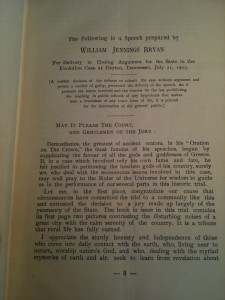In addition to the off-prints of the various past organizations that made up the Roslin Institute, we have FAE Crew’s collection. The majority of the off-prints in his collection, found in 39 bound volumes, were written by other authors such as Conrad Hal Waddington, Leonard Darwin, and Alan Greenwood among others and some of the articles were even previously owned by Arthur Darbishire. The non-Crew authored material dates between 1814 and 1936 and Crew’s articles date between the years of 1930 to 1940 and he organized the bound off-prints into series: Fowl (18 volumes- GB 237 Coll-1496/1-18); Birds (2 volumes – GB 237 Coll-1496/19-20); Pigeons (2 volumes -GB 237 Coll-1496/21-22); Genetics General (9 volumes – GB 237 Coll-1496/23-31); and General Biology (8 volumes – GB 237 Coll-1496/32-39). There is a wealth of fascinating articles found in this collection – especially in the Genetics General and General Biology volumes which show Crew’s wide-ranging interests including animal genetics, human genetics, eugenics, evolution (both scientific and philosophical), teaching medical students and ethics. A few particular highlights are Major Leonard Darwin’s article Organic Evolution: Outstanding Difficulties and Possible Explanation, Cambridge University Press, 1921; 
Condemned for Teaching Lies: the following is a speech prepared by William Jennings Bryan for delivery in closing argument for the State in the Evolution Case at Dayton, Tennessee, July 21, 1925;
and H. Muller’s Lenin’s Doctrines in Relation to Genetics, Academy of Sciences, USSR, 1934.
In addition to the articles collected by Crew for his research, there is a box of un-bound off-prints authored by Crew himself (GB 237 Coll-1496/40/1-70).  These articles span the years between 1930 and 1940 and discuss such topics as: animal breeding, sterilisation, eugenics, heredity versus environment and other genetic based topics. The last article in the collection is quite interesting since it’s Crew’s thoughts on war when he was a Lieutenant-Colonel in the British Army,
These articles span the years between 1930 and 1940 and discuss such topics as: animal breeding, sterilisation, eugenics, heredity versus environment and other genetic based topics. The last article in the collection is quite interesting since it’s Crew’s thoughts on war when he was a Lieutenant-Colonel in the British Army,  The war and ourselves in the Journal of the British Army Medical Corps, 1940 (GB 237 Coll-1496/40/74).
The war and ourselves in the Journal of the British Army Medical Corps, 1940 (GB 237 Coll-1496/40/74).
This material, the collected offprints of other scientists, offers a fascinating insight into the research interests of FAE Crew by showing his diverse interests which helped to inform his work as seen in the same collection in his self-authored papers.



